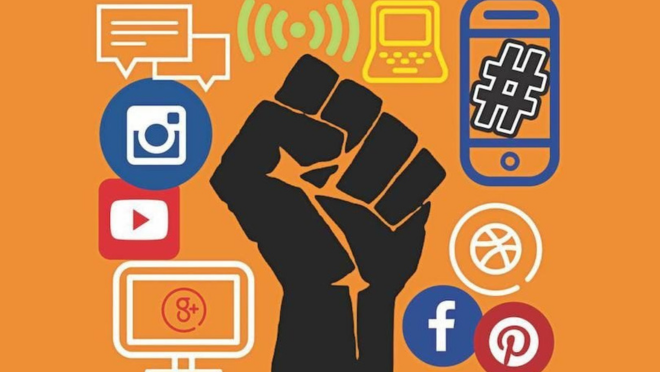Tag, share, protest: New face of student activism in Bangladesh
Tag, share, protest: New face of student activism in Bangladesh

Photo: Collected
Have you ever considered the impact one Facebook post can make nowadays; bringing thousands of people to the streets in minutes?
Protests in Bangladesh have changes dramatically over the years. There was a time, when students had to rely on word of mouth, hand painted leaflets and slow organisational efforts. But now, social media has turned activism into a fast, coordinated and unstoppable force. It has become a powerful tool for us students for exposing injustice, setting viral trends and even calling for help.
- From leaflets to livestreams – In the past, organising a protest was difficult, tiresome and required a lot of manpower. Students had to physically gather in one place, distribute pamphlets or spread information person to person. And if the authorities cracked down, the movements used to be scattered. However, now a single viral post can turn a minor issue into a national debate overnight. For example, if a student is being mistreated by the police or a governments decision that students don’t agree with; within hours, it can be trending on Facebook with a catchy hashtag. This speed and reach have made modern students protests more effective than before.
- How a hashtag helped oust a prime minister – One of the biggest examples of a protest being driven by the power of social media was the July Revolution in 2024. It all started when students found the government job quota system to be unfair. Soon hashtags like #QuotaReform and #IAmRazakar started to spread like wildfire on social media. International media picked up the issue and was right by our side when the students fought. The power of social media was to significant that they had to turn the internet off to try to stop the students. And eventually, the nationwide protest led to the downfall of a prime minister.
- Viral trends: Protests with entertainment – Social media protests can have humour and creativity in them as well. For example, when the DU students were fed up with the unbearable noise pollution near their campus, they blasted hit songs like “Teri Aakhya Ka Yo Kajal” outside the vice chancellor’s office. This innovative protest might have gone in vain if their dance protest went viral on social media and soon authorities were forced to take appropriate action. Another example would be the infamous “Dakat Watch” by the communities. A few days after the fall of the Awami League government following the July protests, people were faced with another danger, looting and dacoity. People started night patrols, posted about in on social media, and boom thousands followed. Before it was long, the entire Dhaka city had started to participate in it in their own creative ways.
- The dark side: Rumours can go too far –While social media is great for activism, it also has a darkside. False information can also spread like wildfire. For instance, the case of Suba who was allegedly kidnapped. The Facebook post of her father had went viral within hours and thousands of people shared the story demanding justice. But later, it turned out she had run away with her boyfriend. If the situation had been real, the response would have been amazing. But in this case, the entire country was misled. This shows the power of social media. It can gather support for a cause but it can also spread misinformation in minutes.
So, the moral of the story is that, a pen is mightier than the sword, but nowadays, a #hashtag is even stronger.


